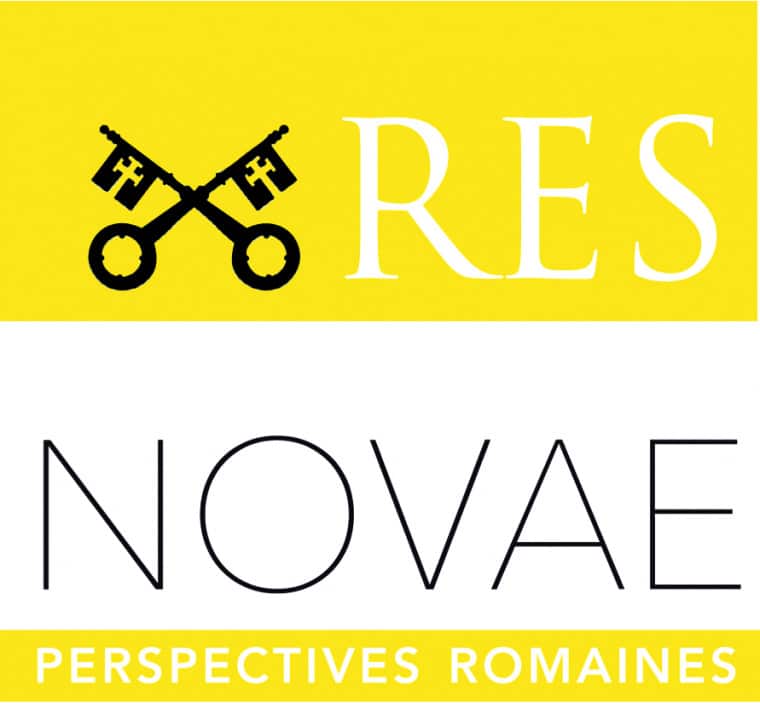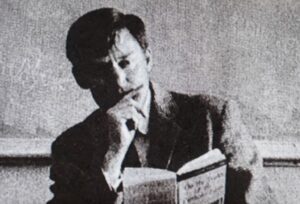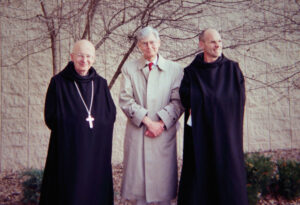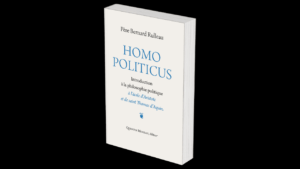La parution du livre Des profondeurs de nos cœurs du pape Benoît XVI et du cardinal Sarah, et la polémique intense qui l’a immédiatement suivie, ont remis brusquement en lumière l’étrangeté de la présente situation de l’Église : on aperçoit à son sommet un pape en exercice aux côtés d’un pape émérite, vivant à quelques centaines de mètres l’un de l’autre, qui viennent de prendre parti différemment, pour ne pas dire de manière opposée, sur un problème institutionnel d’importance gravissime, la discipline du célibat sacerdotal dans l’Église latine. Sans doute le Pape François ne s’est-il pas encore prononcé expressément en faveur de l’ouverture d’une brèche dans ce célibat, mais personne ne doute que le vœu de la dernière assemblée du Synode, qui propose de pouvoir conférer l’ordination sacerdotale à des diacres mariés dans un contexte de pénurie sacerdotale (celui de l’Amazonie pour l’instant), n’exprime sa pensée.
Le problème, à vrai dire, n’est pas tant qu’il pourrait sembler qu’il y a deux papes à la tête de l’Église, il est surtout qu’aucun des deux ne parvient à trancher la question.
Dans notre livre Quel chemin pour l’Église ? paru chez Hora Decima en septembre 2004, quelque six mois avant l’élection de Benoît XVI, nous consacrions un chapitre à imaginer ce qui pourrait advenir après le pontificat finissant de Jean-Paul II, chapitre intitulé : « “Dernier pape” ou pape de transition ? »
La première hypothèse, que nous qualifions de celle du « dernier pape », examinait la possibilité de l’élection d’un homme issu de la tendance libérale de l’Église, dans la ligne du cardinal Martini, pour une progression significative de l’« esprit du Concile » et une plus grande mise en adéquation de l’Église avec les démocraties modernes. Il se serait agi d’une « avancée de Vatican II dans le sens d’une évolution institutionnelle », écrivions-nous. La mise en avant de la « collégialité » et de la « décentralisation » (on parlait encore peu de « synodalité ») permettant « l’adoption sans réticence du débat consensuel au sommet et le gouvernement de groupes de pression “dans la ligne” ».
L’autre hypothèse était celle d’un « pape de transition ». « Dans le cas de l’élection d’un restaurationniste, on pourrait alors passer de l’hypothèse de “dernier pape”, c’est-à-dire l’hypothèse d’une sortie plus ou moins rapide hors de la structure traditionnelle de la papauté, à l’hypothèse symétriquement opposée, celle d’un pape de transition, à savoir une sortie progressive de la papauté postconciliaire ». Nous n’imaginions pas naïvement que l’élection d’un pape de tendance ratzinguérienne, voire celle de Joseph Ratzinger lui-même, entraînerait automatiquement un processus de « sortie du Concile », mais nous pensions qu’elle pourrait établir les conditions d’un mouvement en ce sens, notamment en raison des oppositions doctrinales de plus en plus marquées, qui sont comme la bombe d’un schisme toujours prête à exploser.
Nous avions doublement raison. Et deux fois tort. De fait, les deux hypothèses se sont successivement réalisées, la seconde en 2005, la première en 2013, mais dans un cas comme dans l’autre, pas sous la forme tranchée que nous décrivions, mais sous cette forme molle, propre à notre temps de catholicisme sans virilité.
Le grand acte dans un sens de transition hors de l’ère conciliaire aura été, pour le Pape Ratzinger, le motu proprio Summorum Pontificum qui, comme l’ont bien vu ses détracteurs, a eu pour effet de réinvestir d’une pleine légitimité la liturgie d’avant Vatican II comme lex orandi, en concurrence avec la lex orandi d’après Vatican II. Mais pour le reste, on a plutôt assisté, il faut bien le dire, à un non-gouvernement de l’Église et de la Curie.
Quant à la gestion du Pape Bergoglio, bien plus énergique, il semble qu’elle ne soit pas en mesure d’aller au-delà de l’ouverture morale opérée par les assemblées du Synode sur la Famille, et de l’ouverture institutionnelle préparée par l’assemblée du Synode sur l’Amazonie. L’entourage du pontife ne cache pas qu’il considère que le Pape François ne fait rien d’autre que de poser des pierres d’attente pour un futur pontificat vraiment réformateur.
Autrement dit, on en est, en 2020, au même point qu’en 2005. Sauf que les deux expériences possibles ont été (à demi) tentées, et qu’elles ont toutes les deux échoué du point de vue des fruits qu’on peut attendre d’une réforme ecclésiastique, si l’on considère que l’Église de Pierre est toujours dans le même état, et même plus grave puisque quinze ans ont passé, durant lesquels, en Occident en tout cas, les églises ont continué de se vider, le Credo des prêtres et des fidèles de se diversifier, le nombre des vocations de s’effondrer.
Mais surtout les problèmes doctrinaux et les problèmes institutionnels adjacents à la doctrine ne sont pas tranchés. Au contraire, la succession de ces deux pontificats, et maintenant, leur sorte de coexistence avec l’affaire de Des profondeurs de nos cœurs, fait que l’enseignement postconciliaire montre plus que jamais la faiblesse intrinsèque de son caractère pastoral, un enseignement jamais totalement normatif, où le définitif n’est en somme que provisoire. Ainsi Familiaris consortio, de Jean-Paul II, est contrebalancé par Amoris lætitia ; Sacerdotalis cælibatus, de Paul VI, est nuancé par l’assemblée du Synode sur l’Amazonie.
Jusqu’à ce que l’expression de la foi s’ajuste à nouveau, tant pour les évêques que pour le pape au « qui vous écoute m’écoute », de Luc 10, 16. Le pape, auquel le Christ a promis qu’il ne défaillirait pas lorsqu’il « confirmerait ses frères ». C’est ce pourquoi il est pape : confirmer ses frères.
What path for the Church?
The publication of the book From the depths of our hearts, written by pope Benedict XVI and Cardinal Sarah, and the intense polemic which immediately followed, have abruptly put back in the spot light the incongruity of the present situation of the Church: we notice at the top a sitting pope next to a pope emeritus, living only a few hundred meters away from each other, who just took different sides, not to say opposite sides, on an institutional issue of the gravest importance, the discipline of priestly celibacy in the Latin Church. Maybe, Pope Francis has not yet expressively pronounced himself in favor of what would constitute a breach in celibacy, but no one doubts that the wish of the last assembly of the Synod, which suggest the possibility to confer priestly ordination to married deacons in a context of shortage of priests (a context belonging to the Amazon, for now), expresses his thoughts.
The problem, truthfully, is not so much that it could appear like there are two popes at the head of the Church, but mostly that none of the two is successful in deciding the matter.
In our book What path for the Church? published by Hora Decima, in September 2004, some six months before the election of Benedict XVI, we dedicated a chapter to imagine what could happen after the ending pontificate of John Paul II, a chapter titled: “ “Last pope” or pope of transition?”
The first hypothesis, the “last pope” hypothesis, examined the possibility of the election of a man coming from the liberal side of the Church, that of Cardinal Martini, for a significant progression of the “spirit of the Council” and a greater affinity of the Church with the modern democracies. It would have been about a “progress of Vatican II in the sense of an institutional evolution”, we wrote. The emphasis on “collegiality” and “decentralization” (“synodality” was not often spoken about in that time) allowing “the adoption without reluctance of the consensual debate at the top and the government of pressure groups “in line”.”
The other hypothesis was one of a “pope of transition”. “In the case of the election of a restorationist, we could then go from the “last pope” hypothesis, that is to say the hypothesis of an way out more or less quickly of the traditional structure of the papacy, to a symmetrically opposed hypothesis, one of a pope of transition, that is to say a progressive way out from the post-conciliar papacy”. We did not innocently imagine that the election of a ratzingarian pope, eventually the one of Joseph Ratzinger himself, would automatically lead to a process of exiting the Council, but we thought it could establish the conditions of a movement in that sense, notably in regards to the doctrinal oppositions more and more pronounced, which are like the bombshell of a schism always ready to explode.
We were right twice, and wrong twice. Indeed, both hypothesis successively took place, the second one in 2005, the first one in 2013, but in both cases not in this abrupt way we described but in a dole way, proper to our time of timorous catholicism.
The great act in a sense of transition out of the conciliar era will have been, for Pope Ratzinger, the motu proprio Summorum Pontificum which, as its detractors saw it, had for effect to reinvest of a full legitimacy the liturgy from before Vatican II as lex orandi, in competition with the lex orandi from after Vatican II. But as to the rest, what we watched was rather, one must say, a non-government of the Church and of the Curia.
As to the management of Pope Bergoglio, much more dynamic, it seems it is not capable of going further than the moral openness carried by the assembly of the Synod on the Family, and the institutional openness prepared by the assembly of the Synod on the Amazon. The close circle of the pontiff does not hide the fact that it considers Pope Francis does nothing else than setting small stones for a future pontificate that would truly engage in reforms.
In other words, we are today, in 2020, at the same place we were in 2005, except that both possible experiments have been attempted and both have failed. They have failed in regards to the fruits that can be expected of an ecclesiastical reform, if we consider that the Church of Peter is still in the same state, and even worst, now that fifteen years have passed during which, in the Western world at least, the churches have continued to empty, the Credo of the priests and the faithful to become more diverse and the number of vocations to collapse.
But, most of all, doctrinal problems and institutional problems adjacent to doctrine are left unresolved. To the contrary, the succession of these two pontificates, and now, their sort of co-existence with the story of the book From the depths of our hearts, makes it so that post-conciliar teaching shows more than ever the intrinsic weakness of his pastoral character, a teaching never totally normative, where what is defined is in reality only temporary. In this way, Familiaris consortio, of John Paul II, is counter balanced by Amoris lætitia; Sacerdotalis cælibatus, of Paul VI, is played down by the assembly of the Synod on the Amazon.
Until the expression of the faith, for the bishops as much as for the pope corresponds again to the “Whoever listens to you listens to me”, of Luke 10, 16. The pope, to whom Christ promised he would not fail when he would “confirm his brothers.” This is why he is pope: so to confirm his brothers.
In che direzione va la Chiesa?
La pubblicazione del libro Dal profondo dei nostri cuori di papa Benedetto XVI e del cardinale Sarah, e l’intensa polemica che ne è immediatamente seguita, hanno portato improvvisamente alla luce la particolarità dell’attuale situazione della Chiesa. Al suo vertice vediamo un papa in carica accanto ad un papa emerito, che vive a poche centinaia di metri dal primo, e che ha appena preso una posizione diversa, per non dire opposta, su un problema istituzionale della massima importanza: la disciplina del celibato sacerdotale nella Chiesa latina. È vero che papa Francesco non si è ancora pronunciato espressamente a favore dell’apertura di una breccia sulla questione del celibato, ma nessuno dubita che il voto dell’ultima assemblea del Sinodo, che si propone di poter conferire l’ordinazione sacerdotale ai diaconi sposati in un contesto di scarsità sacerdotale (quello dell’Amazzonia per il momento), esprima il suo pensiero.
Il problema, infatti, non è tanto quello che possa sembrare che a capo della Chiesa ci siano due Papi, quanto piuttosto che nessuno dei due sia in grado di risolvere la questione.
Nel nostro libro Quel chemin pour l’Église ? pubblicato da Hora Decima nel settembre 2004, circa sei mesi prima dell’elezione di Benedetto XVI, abbiamo dedicato un capitolo a immaginare cosa sarebbe potuto accadere dopo la fine del pontificato di Giovanni Paolo II, un capitolo intitolato: « Ultimo papa » o papa di transizione?.
La prima ipotesi, che chiamiamo quella dell' »ultimo papa », esaminava la possibilità di eleggere un uomo appartenente alla tendenza più liberale della Chiesa, nella linea del cardinale Martini, per una progressione significativa dello « spirito del Concilio » e un maggiore allineamento della Chiesa alle democrazie moderne. In quell’occasione scrivevamo che sarebbe stato un passo avanti del Vaticano II nel senso di un’evoluzione istituzionale. La promozione della « collegialità » e del « decentramento » (si parlava ancora poco di « sinodalità ») avrebbe permesso l’adozione di un dibattito consensuale ai vertici e il governo della Chiesa da parte di gruppi di pressione allineati.
L’altra ipotesi era quella di un “papa di transizione”. Scrivevamo che nel caso dell’elezione di un Restauratore, si sarebbe potuti passare dall’ipotesi dell' »ultimo papa », ovverosia dall’idea di un’uscita piuttosto rapida dalla struttura tradizionale del papato, a quella, simmetricamente opposta, di un papa di transizione, cioè di un’uscita graduale dal papato postconciliare. In quel momento ingenuamente non immaginavamo che l’elezione di un papa di tendenza ratzinghiana, e nemmeno quella dello stesso Joseph Ratzinger, avrebbe portato automaticamente a un processo di « uscita dal Concilio”, pensavamo che un tale evento potesse porre le condizioni per l’inizio di una spinta verso l’uscita, soprattutto alla luce delle sempre più marcate opposizioni dottrinali, che sono come la miccia accesa di un possibile scisma.
Avevamo doppiamente ragione. E due volte torto. In realtà, le due ipotesi si sono avverate successivamente, la seconda nel 2005, la prima nel 2013, ma in entrambi i casi, non nella forma incisiva che abbiamo descritto, ma in quella forma morbida, propria del nostro tempo caratterizzato da un cattolicesimo assai poco virile.
Per papa Ratzinger, l’atto più significativo in un senso di transizione verso un’uscita dall’era conciliare è stato il motu proprio Summorum Pontificum che, come i suoi detrattori hanno ben visto, ha avuto l’effetto di restituire piena legittimità alla liturgia pre-Vaticano II come lex orandi, in concorrenza con la lex orandi dell’era post-Vaticano II. Ma per il resto, dobbiamo riconoscerlo, abbiamo piuttosto assistito a un non governo della Chiesa e della Curia.
Per quanto riguarda la gestione molto più energica di papa Bergoglio, sembra che non riesca ad andare oltre l’apertura morale operata dalle assemblee del Sinodo sulla Famiglia, e l’apertura istituzionale preparata dall’assemblea del Sinodo sull’Amazzonia. L’entourage del Pontefice non fa mistero del fatto che ritiene che Papa Francesco non stia facendo altro che gettare le basi per un futuro pontificato realmente riformatore.
In altre parole, nel 2020 siamo allo stesso punto del 2005. Salvo che i due possibili esperimenti sono stati (ma solo in parte) provati, ed entrambi sono falliti dal punto di vista dei frutti che ci si dovrebbe aspettare da una riforma ecclesiastica, se si considera che la Chiesa di Pietro è ancora nello stesso stato, e ancor più grave da quindici anni a questa parte, durante i quali, almeno in Occidente, le chiese hanno continuato a svuotarsi, il credo dei sacerdoti e dei fedeli a cercare altri obiettivi e il numero delle vocazioni a crollare.
Non sono però stati risolti i problemi direttamente dottrinali e i problemi istituzionali legati alla dottrina. Al contrario, la successione di questi due pontificati, e ora il loro tipo di relazione con la questione sollevata dall’uscita di Dal profondo dei nostri cuor, fa sì che l’insegnamento post-conciliare mostri più che mai l’intrinseca debolezza del suo carattere pastorale, un insegnamento mai del tutto normativo, dove il definitivo è in ultimo solo provvisorio. In questo modo la Familiaris consortio di Giovanni Paolo II è controbilanciato da Amoris lætitia; la Sacerdotalis cælibatus di Paolo VI risulta sfumata dall’assemblea del Sinodo sull’Amazzonia.
Questo proseguirà fino al momento in cui l’espressione della fede, tanto per i vescovi quanto per il Papa, si conformerà nuovamente al “chi ascolta voi ascolta me” (Luca 10,16). Il Papa, a cui Cristo ha promesso che non fallirà fino a quando « confermerà i suoi fratelli ». Proprio per questo è Papa: per confermare i suoi fratelli.






